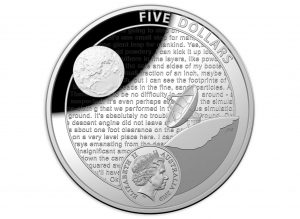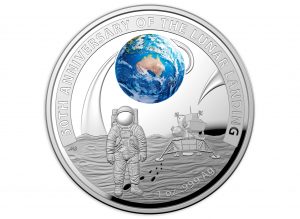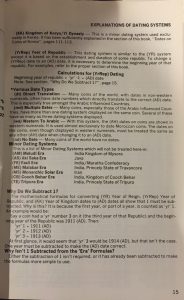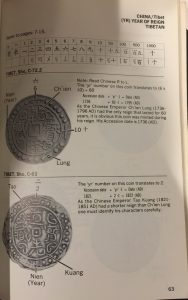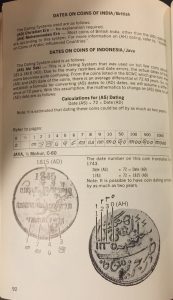Mar 6, 2022 | coins, foreign, medals, news
In support of the Ukrainians fighting for their freedom, the Monnaie de Paris created the Solidarity with Ukraine Mini-Medal. The copper-nickel medal is 34mm in diameter and features the Eifel Tower next to a colored Ukrainian flag. On the Ukrainian flag is the French national motto “Liberté, Egalité, Fraternité.”
The reverse is described as having a common reverse used by the Monnaie de Paris with the 2022 date.
Each medal is 10€ (about $10.93), with 8€ donated to the French Red Cross for Ukrainian relief. The Monnaie de Paris does not say that they will ship to the United States or the costs. Mint officials will likely answer an inquiry on Monday.
If you purchase a medal from the Monnaie de Paris, remember that most credit card companies will charge a transaction fee for converting euros to dollars. Contact your credit card company to ask about the charges.
You can find the medal on the Monnaie de Paris website. The link will help you visit the page in English.
Please watch @coinsblog on Twitter and this post for updates on availability and shipping to the United States.
And now the news…

February 28, 2022
The newfound Roman coin in Hungary features a bearded Emperor Volusianus on one side and Libertas, the personification of freedom, on the other.

→ Read more at
livescience.com

March 2, 2022
The Royal Canadian Mint says it will be donating the net proceeds of sales on its 2022 pysanka-themed collector's coins to the Red Cross Ukrainian relief fund in light of the Russian invasion. “For the past seven years, the Mint has proudly honoured the richness of Ukrainian culture and artistry in Canada with a best-selling series of pysanka-themed collector coins.

→ Read more at
ottawa.ctvnews.ca

March 3, 2022
Charles Spencer just found buried treasure (kidding…sorta). Today, Princess Diana’s brother shared a must-see photo on his personal Instagram account, featuring a Roman coin that was discovered at Althorp House (the English estate where the siblings grew up).

→ Read more at
purewow.com

March 4, 2022
A gold stater from Lydia, one of the first coins in the world. Such coins were the very first coins to be used in the world.

→ Read more at
greekreporter.com

March 4, 2022
The Department of Homeland Security just returned a trove of artifacts deemed to be the property of the French government, and five gold ingots that were likely smuggled to the U.S. decades ago and which landed in a Bay Area auction house, were among them.

→ Read more at
sfist.com

March 4, 2022
Since November, we have published 38 coin ads throughout our newspapers in Ohio and Michigan.

→ Read more at
athensmessenger.com

March 5, 2022
The Bangla word Takshal which is "mint" in English, is a place where money is coined, especially under state authority. Since Muslim rule in Bengal was established in 1205 by Ikhtiyar Uddin Muhammad bin Bakhtiyar Khalji, the rulers started making coins from the capital and other important administrative and commercial cities.

→ Read more at
tbsnews.net
Oct 31, 2021 | coins, foreign, news, US Mint

Today marks the 16th Anniversary of the Coin Collectors Blog. When I started this blog, I did not know if I had enough to write about. But numismatics has had many twists and turns over the years to keep the hobby interesting. As long as there is something to write about and you are willing to read it, I will keep going. Here’s to the last 16 years and more fun in the future. Thank you for being a loyal reader!
Collectors are reporting that they received their orders of 2021 Morgan and Peace Dollars. Deliveries have come in waves where some have received multiple packages over two weeks.
A few collectors have noticed differences in the finish between different coins. A local collector showed me the difference between a Morgan Dollar with the CC privy mark and a 2021-S coin. The coin struck in San Francisco had a cloudier look. The Philadelphia Mint struck the Morgan Dollars with the privy marks.
A Canadian friend reported receiving colored Bluenose 10-cent coins in change. There is a general consensus that Canadians love the coins. One story included a cashier who was excited to open a roll of the new coins and took joy in giving them out.
Someone I know who is a member of the U.S. military had his post changed to the Pacific. As part of his tour, he went to Australia, where he discovered the alphabet coins. The Royal Australian Mint created 26 new designs with reverses featuring something Australian for each letter of the alphabet. The program, dubbed The Great Australian Coin Hunt 2, follows the 2019 program.
He was so impressed with the coins that He mailed a set of the 2019 and 2021 coins home for his children. When I told him that the Royal Mint released a similar set in the U.K., he said he might try for a tour in the North Atlantic to pick up a set.
There are a lot of interesting world coins to explore. Collectors may want to branch outside the U.S. and start a new collection.
And now the news…

October 26, 2021
A family in Michigan found an old ammunition round in there house that was filled with coins and bills decades ago. MSP First District A Michigan family made a bombshell discovery this weekend when they discovered a non-live WWI-era ammunition round was filled with treasure.

→ Read more at
nypost.com

October 30, 2021
0:00 0:03:24 A rare piece of metal money made in the 1600s in the New England area of the U.S. could be sold for $300,000.

→ Read more at
learningenglish.voanews.com

October 30, 2021
Prisoners at historic Port Arthur were not allowed to carry money. So how did a pile of silver shillings worth about a week's salary for one of the penal colony's overseers end up buried beneath the convicts' workshop?

→ Read more at
abc.net.au

October 30, 2021
More than 6,000 silver coins from the late Middle Ages were discovered during a renovation project on a farm in the village of Rainbach, Upper Austria. The silver coins, which were handed over to the OÖ Lande-Kultur GmbH museum in Upper Austria, also known as Linz Schlossmuseum, “were wrapped in fabric and kept in a clay lidded pot,” the museum said.

→ Read more at
klewtv.com
May 9, 2019 | Australia, coins, commemorative, foreign
While perusing my Twitter feed, I found the announcement from the Royal Australian Mint is beginning the presale of the two-coin set honoring the 50th Anniversary of Apollo 11.
The set features a 2019-S Apollo 11 50th Anniversary Proof Clad Half Dollar and an Australian Silver Proof $5 coin. The two-coin set can be ordered for AU$195.00 in Australia, where the price includes the Goods and Services Tax (GST). Outside of Australia, the price is 177.27 ($123.64 as of May 9, 2019).
The Australian coin has an interesting design. On the obverse, the Royal Australian Mint reduced the size of Queen Elizabeth II’s effigy on the obverse and filled the side with an image of the moon, a radio telescope representing the CSIRO Parkes Observatory, and a part of the transcript of the Apollo 11 mission. The CSIRO Parkes Observatory was one of the ground tracking stations that helped NASA communicate with the Apollo 11 crew.
The reverse features a stylized scene from the moon landing with a color image of the earth positioned in a way to make Australia facing the virtual camera.
The Australian $5 silver coin can only be purchased in this set and has a mintage limit of 10,000 coins. Thus, it is safe to assume that there will be a limit of 10,000 of these sets.
The Royal Australian Mint is selling a version of the silver coin that is plated in nickel and domed like the U.S. coin. The images on the Royal Australian Mint website shows a dark-colored coin that makes the colored image of the earth stand out. This coin also has a limited production of 10,000 coins.
There is also a gold coin and a six-coin uncirculated set that features copper-nickel base coins and aluminum-bromide one- and two-dollar coins. These coins feature different reverse designs than their precious metals counterparts. The obverse features the effigy of Queen Elizabeth II by Ian Rank Bodley.
Coins ordered now will be shipped starting on June 5, 2019.
The Royal Australian Mint has not (yet) provided information if there will be a special program for shipping to the United States or if they will partner with the U.S. Mint to sell the set.
If you are thinking about ordering you might want to watch the currency markets. There has been a decline in the value of the Australian Dollar (AUD) versus the U.S. Dollar since the beginning of April. Although markets are difficult to time, a fluctuation of 5-percent in the prices is not going to make a big difference.
Aside from waiting for answers to my questions from the Royal Australian Mint, I will watch the markets for the next two weeks to see if I can save money if the AUD dips below 60-cents to the USD.
Coin images courtesy of the Royal Australian Mint.
Mar 24, 2019 | coins, commemorative, foreign
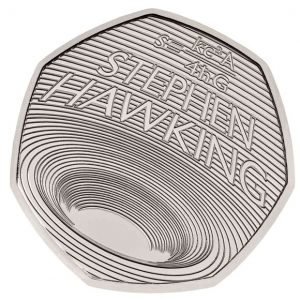
2019 Celebrating The Life of Stephen Hawking 50P Coin Reverse
(Image Courtesy of the Royal Mint)
A Commonwealth Realm is a sovereign country in which the Monarch of Great Britain, currently Queen Elizabeth II, is the reigning constitutional monarch and head of state. The role of the queen is largely symbolic as the government of each country manage its domestic affairs.
As part of this management, each country produces its own coinage. Within the Commonwealth Realm, the largest state-run mints are the Royal Mint, Royal Canadian Mint, Royal Australian Mint, and Perth Mint. There are other private mints that produce legal tender coins, but these are the only government-owned mints in the commonwealth.
Every time one of these mints issues a new coin for circulation, the information is all over their country’s media. For example, in the run-up to the issue of the Peter Rabbit circulating 50p commemorative as part of the Royal Mint’s Beatrix Potter series, nearly every news outlet in the U.K. has been covering the anticipation.
This phenomenon is not restricted to the Commonwealth Realm. Former Commonwealth members also heavily promote their coins. We know that India is issuing a 12-sided 20 rupee coin along with other new designs. South Africa Reserve Bank is issuing circulating coins to celebrate the country’s 25 years as a Constitutional Democracy.
Yet the United States press has been largely silent. Sure, there are blurbs when a congressperson drops a bill into the virtual hopper but the press has been silent after that.
While there were other things going on in December, there was very little reported about the Naismith Memorial Basketball Hall of Fame Commemorative Act for 2020.
There was hardly a peep out of the press for the Apollo 11 50th Anniversary Commemorative coins. Even with the political turmoil, this country should be commemorating one of its greatest feats of the 20th century that did not involve bombs or bullets.
There has been more coverage in the science and tech-related press about the release of the Black Hole coin honoring Stephen Hawking by the Royal Mint.
To its credit, the American Legion has been promoting the 100th Anniversary commemorative coins to their members. However, was there any general media outlets covering the program’s release?
The hobby is perceived to be dying because it is not attracting new members. How can the hobby attract new members when it does not promote itself outside of its insular bubble?
I am sure that I will hear from the bullion sellers because they have been crowing about the steady rise of gold prices. Aside from being an investment and not a hobby issue, the rise of gold prices is alarming. Investing in gold and other precious metals is seen as a safe-harbor move when investors predict that markets will be less lucrative. If investors are pulling money out of other investments to invest in gold that means they do not trust the markets and we may be in for problems.
If we stop worrying about what is good or bad for the hobby and figure out how it could survive, maybe we can attract new collectors. First, we have to do is to let everyone know the hobby still exists.
And now the news…

March 12, 2019
This new series comprising denominations of ₹1, ₹2, ₹5, ₹10, and ₹20, designed by the National Institute of Design, Ahmedabad, will aid the visually-impaired through its thoughtful design. As per the notification issued by the Ministry of Finance, apart from the ₹20 coin, which will be a 12-sided polygon (a dodecagon), the rest of the coins will be circular in shape.  → Read more at architecturaldigest.in
→ Read more at architecturaldigest.in

March 18, 2019
A 14th-century French gold coin was discovered inside one of three hidden drawers in a bureau inherited by a woman who lives in Derbyshire, England. The mother of three, Amy Clapp, 37, told reporters she had no idea the 650-year-old coin — or the secret drawers — existed after being left a 20th-century bureau by her distant cousin.  → Read more at thevintagenews.com
→ Read more at thevintagenews.com

March 19, 2019
The brand new commemorative Peter Rabbit coin that was announced last week has been released to the public. The new coin features an original illustration of Peter Rabbit taken from the book, The Tales of Benjamin Bunny.  → Read more at inews.co.uk
→ Read more at inews.co.uk

March 19, 2019
TYLER, TX (KLTV) – An East Texas woman found a unique coin on the side of the road by the Caldwell Zoo more than six months ago, and she wants to find its rightful owner. Jan Hommel, the director of the American Freedom Museum, knew exactly where the coin came from.  → Read more at kltv.com
→ Read more at kltv.com

March 19, 2019
A $1 million penny, a $3 million nickel and more than $100 million more in rare coins are coming to Pittsburgh from March 28 through 30 when the National Coin & Money Show stops at the David L. Lawrence Convention Center.  → Read more at triblive.com
→ Read more at triblive.com

March 20, 2019
A "rare" 650-year-old coin found in a secret drawer in a desk has been sold for £850 at auction. The 14th Century coin was discovered inside one of three hidden drawers in a 1970s bureau, left to a woman by a long-lost relative.  → Read more at bbc.com
→ Read more at bbc.com

March 21, 2019
A number of new coins have been approved by the South African Reserve Bank (SARB) and celebrate the country’s 25 years as a Constitutional Democracy. A few of the coins will be collector’s items, and the R500 and R50 coins are specifically made for commemorative purposes only.  → Read more at capetownetc.com
→ Read more at capetownetc.com

March 23, 2019
LITTLETON, N.H. — After playing a key role in the success of Littleton Coin Company for nearly 30 years, the firm’s Chief Operating Officer Mike Morelli has announced his retirement at the end of 2019.  → Read more at caledonianrecord.com
→ Read more at caledonianrecord.com
Feb 21, 2019 | books, coins, foreign
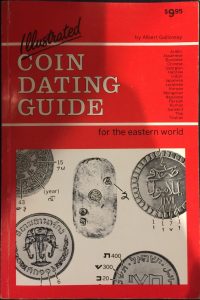 Over the last few months, I have been on another book buying binge. Most of the books I have been buying are references. Many of these references help fill in some of the gaps in my knowledge. One of those gaps is how to date some foreign coins especially those of the eastern world whose language is not Latin-based.
Over the last few months, I have been on another book buying binge. Most of the books I have been buying are references. Many of these references help fill in some of the gaps in my knowledge. One of those gaps is how to date some foreign coins especially those of the eastern world whose language is not Latin-based.
Although the Standard Catalog of World Coins has a basic reference to help figure out the date of a coin, it is not detailed enough. While there are websites on the Internet to help, there is not a single good resource. I wanted a good resource to help me grade these coins. Then I stumbled across the Illustrated Coin Dating Guide of the Eastern World by Albert Galloway.
Published by Krause Publications, it features the tables and descriptions that are in the Standard Catalogs on steroids plus much more information. The absolute best part of this book are the images with the guides pointing to each element to help identify the date coin.
Some coins are not dated but contain the number of years of the current ruler or dynasty. Coins from Israel use the date on the Hebrew Calendar while many Islamic countries include the date of the Islamic or Hijri Calendar.
Sample Pages
And it helps in more ways than figuring out the dates. If you are not familiar with the pictograph-style writing of some East Asian countries, having in the information in front of you can help identify the difference between a Korean coin from a Japanese coin, something that recently helped me.
Also, the book points out how to identify elements like mintmarks, privy marks, coiners marks, and other identifying varieties on these coins. As we know, a mintmark or other distinguishing mark can make a difference in a coin’s value.
The book was first published in 1984 and republished in 2012. Both versions appear to be the same with a color variation of the cover—the 1984 publication has a predominantly red cover.
The only complaint about the book is that it should be spiral bound so that the book could lay flat on the table. I have not had the book long and I have already bent the spine. At this rate, the book may not last long. For that reason, I give the book a grade of MS-69. If you are searching through lots of foreign coins, this book is a must-have for your numismatic library.
Jan 29, 2019 | coins, education, Euro, foreign
After my last post about the Staatliche Münze Berlin, the Berlin State Mint, a few German readers provided a lesson in the political structure of Germany to understand the institution’s role in the country’s coin production.
Unlike what I wrote previously, the Berlin State Mint is a government mint but for the government of the Federal State of Berlin.
Berlin is one of two cities that is also designated as a state. The other is Hamburg. The divisions trace back to the many small states that existed in the region during the days Holy Roman Empire. In short, it was an attempt to bring unification to the region by attempting to allow each smaller states, kingdoms, principalities, cities, etc. to provide their own rule for the common good. Some reference suggests that there were over 300 individual governments with their own governing rules at the height of the Empire.
Arguments, wars, and Napolean brought about many changes where many of the smaller states merged into larger ones and others changed by conflict. Following the Treaty of Versailles that ended World War I, Germany was forced to give up territories that left the current state boundaries were mostly set as they are today.
Before I hear from our German friends, I am leaving out a lot of history on purpose. I just want enough to bring context to the discussion. If anyone wants a more detailed discussion about the history as it pertains to the German mints, I recommend reading the article “
Why Germany has Five State-Owned Mints.”
Although the Third Reich tried to unify the country around a federal government, there were a number of administrative functions left to the states including the minting of coins and printing of currency. Even Adolph Hitler learned that to keep his version of an orderly government, he had to work with each of the states.
Following World War II, the concept of the confederation of states continued with the formation of the Federal Republic of Germany (West Germany) and the German Democratic Republic (East Germany). Although the federal government has evolved with more central power, the states continue to have a degree of independence in their operations that a person with a background in United States history would consider a confederation.
As the country evolved and times mandated change, many of the mints were closed. Production consolidated with the changes in the political structure of Germany. Following the unification of Germany in 1990, only five state mints remained:
NOTE: First letter on the line is the mintmark associated with the mint.
-

-
Berlin State Mint
-

-
State Mint of Baden-Wuerttemberg, Munich
-

-
Barvarian Main Mint, Stuggart
-
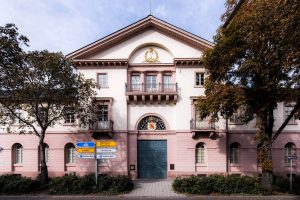
-
State Mint Baden-Wuerttemberg, Karlsruhe
-

-
Hamburg Mint
When the euro was introduced, German law mandated that the minting of the euro coins would be distributed evenly among the five mints. Any production beyond the federally mandated requirement to produce the euro is between the mint and the Finance Minister of the state.
As for the currywurst coin, although it is produced by the Berlin State Mint, it is a product of that mint and not a product endorsed by the German federal government.
If you are confused you are in good company. Even after spending parts of three days looking into the history, I am not sure I am right. It is more confusing than the structure behind the U.S. Mint!
Images of the Germany state mints are courtesy of the mints via their websites.
Jan 27, 2019 | coins, foreign, news

Archaeologists found fragments of ceramic coin moulds at the site when they were carrying out repairs after heavy rain in late 2017.
(Photo: South China Morning Post)
With only a portion of the facility excavated, the archeologists found nine areas that could have been used as part of coin production. There was one kiln site that was likely used to create porcelain coin molds and eight ash pits. They also found copper coins, coin mold fragments, and other items that were used as part of the coining process.
The China Numismatic Society told news sources that the inscriptions on the molds date the facility to 9-23 AD and corresponds to the reign of Wang Mang of the Han Dynasty.
Finds like this shows how the use of money and numismatics can lead to better understanding of societies what may have been lost.
And now the news…

January 18, 2019
It’s been dubbed one of the loveliest coins ever minted and, almost two centuries after it was struck, it’s making headlines again. A rare gold five pound coin, featuring an idealised image of Queen Victoria in the early years of her reign, has sold for a six-figure sum at a private auction.  → Read more at royalcentral.co.uk
→ Read more at royalcentral.co.uk

January 21, 2019
Archaeologists discover fragments of ceramic moulds, copper coins and a kiln site where an ancient government office once stood  → Read more at scmp.com
→ Read more at scmp.com

January 22, 2019
“There used to be this thing called money,” people will say in the future. And children will laugh. “You’re joking,” they’ll say.  → Read more at bostonglobe.com
→ Read more at bostonglobe.com

January 23, 2019
Secret Service members are reportedly exchanging challenge coins that take a jab at the ongoing partial government shutdown.  → Read more at thehill.com
→ Read more at thehill.com

January 23, 2019
The best-known U.S. Mint building in San Francisco is at Fifth and Mission streets, right across the street from the Chronicle building. The Old Mint is an imposing classical structure, but it’s been retired as a money-making plant for more than 80 years. By the early 1930s, the building was too antiquated to meet the increased demand for coins. So the U.S. Treasury found a second location, at Duboce and Buchanan streets, where a natural rock promontory could function as another layer of security. A search through The Chronicle’s archive uncovered photos of the construction of the New Mint in 1936, as well as the coin production work happening inside.  → Read more at sfchronicle.com
→ Read more at sfchronicle.com

January 25, 2019
The Royal Canadian Mint has uncovered the identity of the soldier who inspired its new silver dollar coin, which commemorates the sacrifice of Canadian soldiers on D-Day.  → Read more at cbc.ca
→ Read more at cbc.ca

January 25, 2019
A 10-year-old Indian boy who lives in Oman has collected more than 500 coins from across 120 countries.  → Read more at timesofoman.com
→ Read more at timesofoman.com
Jan 22, 2019 | coins, commemorative, commentary, foreign

Staatliche Münze Berlin
(photo courtesy of Wikimedia Commons)
While the story about the currywurst commemorative coin seemed like something to poke fun at, I was reminded that Staatliche Münze Berlin, the Berlin State Mint (www.muenze-berlin.de), is not an official government mint. It is a private mint that has been contracted by the German government to assist in producing coins. Their website reports that they produce one-fifth (20-percent) of all German coins.
Reports suggest that the Staatliche Münze Berlin has been under contract to Latvia to produce legal tender coins since 2014.
It appears that Staatliche Münze Berlin would be to Germany as the Pobjoy Mint is to the United Kingdom. Both a private mints that are contracted to strict legal tender coins that create their own commemorative.
This might mean we are safe from coins commemorating poutine and haggis. However, the idea of mixing curry with ketchup may be worth a try!
Jan 20, 2019 | coins, commemorative, foreign, news

The 2019 coin commemorating currywurst has been called everything from ugly to the wurst (Image courtesy of Staatliche Munze Berlin)
Currywurst is considered the national fast food delicacy of Germany. It is a pork sausage that has been sliced part of the way through, boiled then grilled, and served smothered with ketchup mixed with curry powder. Curry powder is sprinkled on top.
According to a friend who spent time working in Germany, currywurst stands are as ubiquitous in Berlin and many other cities as hot dog stands are in New York. Depending on the stand, they can be served on buns, with sauerkraut, or fries. Since returning to the United States several years ago, he says that his family enjoys the German dish frequently.
Coins have been used to commemorate many things. Commemorating food on coins is nothing new. Coins have been used to commemorate agricultural products like wheat and corn. But aside from the (in)famous bottlecap-shaped coin, I cannot remember when a coin was used to commemorate a prepared food.
Now that the Berlin State Mint has broken this barrier, who’s next? Will the Royal Canadian Mint produce a coin honoring poutine? Or will the Royal Australian Mnt grace a coin with Vegemite? I don’t even want to think about a coin commemorating haggis!
And now the news…

January 7, 2019
Click image to enlarge MIDDLEBURY, Vt. – A coin collector from Lewiston, Maine, with no prior connection to Middlebury, has donated more than 1,000 ancient coins to the Middlebury College Museum of Art.  → Read more at middlebury.edu
→ Read more at middlebury.edu

January 13, 2019
A German coin manufacturer has commemorated the country’s love of currywurst with a speciality coin to mark 70 years since the savoury snack was first sold in Berlin. The silver alloy coin, made by Staatliche Munze Berlin, or the Berlin State Mint, features an image of the delicacy’s inventor alongside two giant sausages drowning in curry sauce and pierced with a wooden fork, as is tradition.  → Read more at expressandstar.com
→ Read more at expressandstar.com

January 13, 2019
A silver medal-thaler, issued by Romanian ruler Constantin Brâncoveanu in 1713, sold for USD 16,000 at a numismatic auction in New York, Profit.ro reported. Brâncoveanu, who was a prince of Wallachia between 1688 and 1714, was deposed from his throne by Sultan Ahmed III.  → Read more at romania-insider.com
→ Read more at romania-insider.com

January 13, 2019
New Delhi: A new book traces India's numismatic history through 133 rare coins which are illustrative of the country's antiquity, ethos and traditions. In Suvarna Mohur: India's Glorious History Illustrated through Rare Coins by Arun Ramamurthy, Indian history has been divided into 20 epochs.  → Read more at firstpost.com
→ Read more at firstpost.com

January 14, 2019
The Maine Bureau of Veterans’ Services (MBVS) is pleased to announce the final design selection for the new State of Maine Honorable Service coin and plaque, which will honor all Maine veterans, past and present, regardless of their branch or era of service.  → Read more at boothbayregister.com
→ Read more at boothbayregister.com

January 14, 2019
SINGAPORE: The number of coins that a buyer can use in a single transaction will be streamlined and standardised to 20 coins per denomination after Parliament passed the Currency (Amendment) Bill on Monday (Jan 14).  → Read more at channelnewsasia.com
→ Read more at channelnewsasia.com

January 14, 2019
Mobile coin exchange units are hitting the roads to encourage people to swap the loose change they have collected for easier to handle banknotes, so the coins can be recycled. The modified trucks, which are green and clearly marked with the Treasury Department logo, have a window along the side where the coins can be exchanged for notes of equal value.  → Read more at bangkokpost.com
→ Read more at bangkokpost.com

January 14, 2019
In Berlin, the participants of the most unusual robbery of recent years went on trial. Three young Arab migrants stole a considerable gold coin from the museum using only an ax handle, ropes, stairs, and carts.  → Read more at en.crimerussia.com
→ Read more at en.crimerussia.com

January 16, 2019
Greater Houston Coin Club members have been on a mission to get kids involved in the hobby.  → Read more at abc13.com
→ Read more at abc13.com
Dec 2, 2018 | bullion, coins, foreign, markets, news, platinum
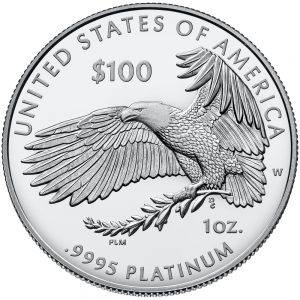 While watching the numismatic news that appears in non-numismatic sources, I noticed that regardless of the predictions of cashless societies taking over, there are a few countries with interest in coins for both commerce and collecting.
While watching the numismatic news that appears in non-numismatic sources, I noticed that regardless of the predictions of cashless societies taking over, there are a few countries with interest in coins for both commerce and collecting.
By far, the one country that seems to have an affinity for coins is India. The news consistently highlights collectors who have coin collections of all sizes and varieties. Whether it is someone who has collected old Indian coins dating back to the Britsh control of the country to someone that collects foreign coins from visitors, there seems to be a story about coin collectors in one of the many Indian news publications.
The other country I can count on for consistent numismatic-related stories is China. Aside from stories about coin shortages and how the poorer areas of the country are hoarding coins, Chinese collectors seem to gravitate toward precious metal coins. Interestingly, Chinese collectors seem to like silver coins even though investors are chasing gold. This is understandable since silver coins can be bigger and cost less.
Recently, it was reported that Chinese collectors are chasing platinum as an investment option. Reports are being circulated that Chinese markets are investing heavily in South African platinum mines allowing the production to increase. With the spot price of platinum ($802.00) lower than the spot prices of gold ($1,222.10) and palladium ($1,170.00), the growth of platinum investment options has grown. The Hang Seng ETF (exchange-traded funds) Index has noted a significant increase in the trading of platinum futures.
Several publications have asked if this means that China is attempting to corner the platinum market. Since I am not a financial analyst, I am not sure. As a numismatist, it is interesting to see that platinum has a growing interest in China.
And now the news…

November 15, 2018
Grab your metal detectors! We are seeking some of the most valuable treasures ever discovered. From buried treasures to sunken treasures, lying beneath villages, towns, cities, farms, riverbeds, and in…  → Read more at invest.usgoldbureau.com
→ Read more at invest.usgoldbureau.com

November 25, 2018
The National Bank of Romania (BNR) has issued several coins to mark the 100-year anniversary of Romania’s 1918 Union. They are a gold coin, a silver coin, and a brass collector coin for numismatic purposes, along with a brass commemorative circulation coin.  → Read more at romania-insider.com
→ Read more at romania-insider.com

November 26, 2018
Limited edition gold and silver coins commemorating the 70th anniversary of the first issuance of the renminbi (RMB) currency and establishment of China's central bank went on sale in China last Friday.  → Read more at gbtimes.com
→ Read more at gbtimes.com

November 26, 2018
The World Platinum Investment Council is pushing for new platinum products to lure Chinese investors into the metal, providing another source of demand for SA’s second-largest mineral export. Weibin Deng, China’s head at the council, which is financially backed by SA’s platinum producers to stimulate investment, outlined plans for coins, metal-backed exchange-traded funds (ETFs) and other products, targeting the country’s burgeoning middle class.  → Read more at businesslive.co.za
→ Read more at businesslive.co.za

November 26, 2018
The Celtic coins discovered in Slovakia were tetradrachms, which were the most precious coins available at the time. In the heart of Slovakia in Mošovce, archaeologists have unearthed 40 …  → Read more at inquisitr.com
→ Read more at inquisitr.com

November 27, 2018
Welcome back for Part II of our Most Valuable Treasure Discoveries series. Below is a continuation of some of the most remarkable treasures unearthed in recent history. The Staffordshire Hoard…  → Read more at invest.usgoldbureau.com
→ Read more at invest.usgoldbureau.com

November 28, 2018
THE CENTRAL Bank of Ireland has unveiled a special commemorative coin created to mark 100 years since Irish women won the right to vote.  → Read more at irishpost.com
→ Read more at irishpost.com
 → Read more at livescience.com
→ Read more at livescience.com
 → Read more at ottawa.ctvnews.ca
→ Read more at ottawa.ctvnews.ca
 → Read more at purewow.com
→ Read more at purewow.com
 → Read more at greekreporter.com
→ Read more at greekreporter.com
 → Read more at sfist.com
→ Read more at sfist.com
 → Read more at athensmessenger.com
→ Read more at athensmessenger.com
 → Read more at tbsnews.net
→ Read more at tbsnews.net

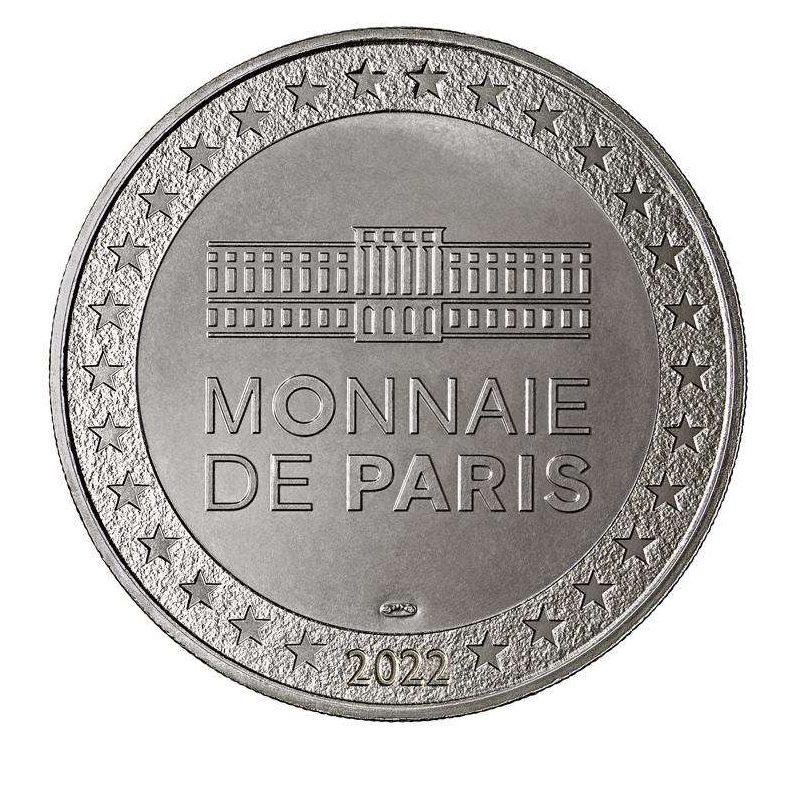
 Today marks the 16th Anniversary of the Coin Collectors Blog. When I started this blog, I did not know if I had enough to write about. But numismatics has had many twists and turns over the years to keep the hobby interesting. As long as there is something to write about and you are willing to read it, I will keep going. Here’s to the last 16 years and more fun in the future. Thank you for being a loyal reader!
Today marks the 16th Anniversary of the Coin Collectors Blog. When I started this blog, I did not know if I had enough to write about. But numismatics has had many twists and turns over the years to keep the hobby interesting. As long as there is something to write about and you are willing to read it, I will keep going. Here’s to the last 16 years and more fun in the future. Thank you for being a loyal reader!